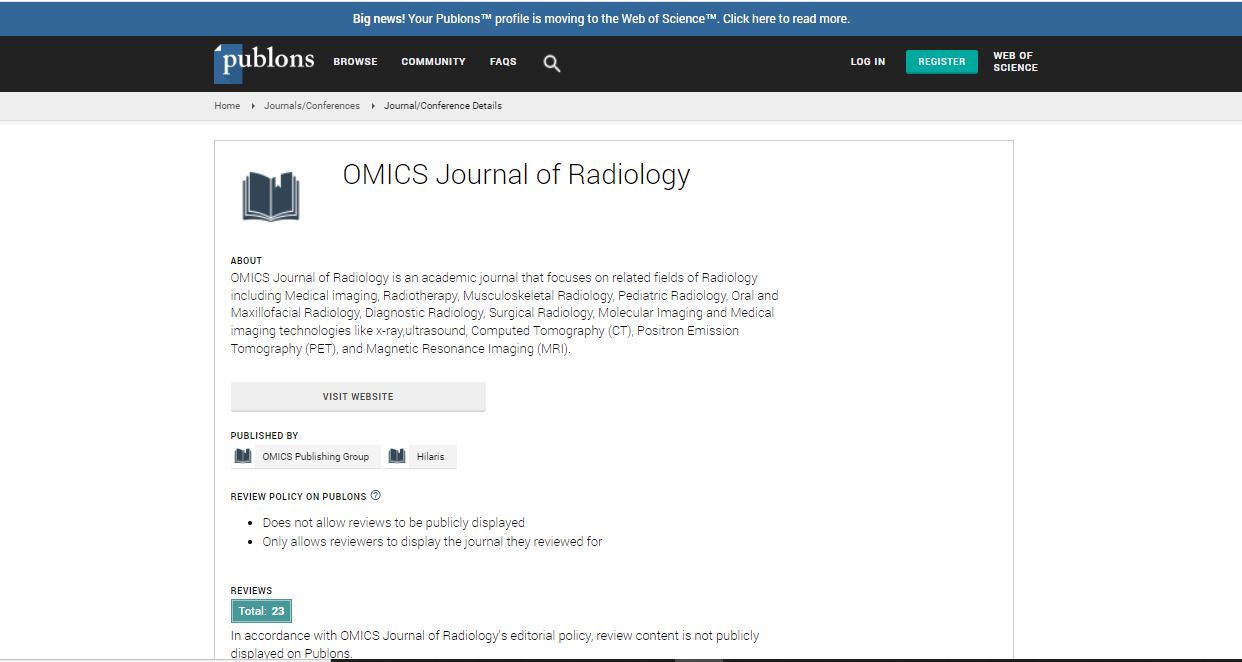Our Group organises 3000+ Global Conferenceseries Events every year across USA, Europe & Asia with support from 1000 more scientific Societies and Publishes 700+ Open Access Journals which contains over 50000 eminent personalities, reputed scientists as editorial board members.
Open Access Journals gaining more Readers and Citations
700 Journals and 15,000,000 Readers Each Journal is getting 25,000+ Readers
Google Scholar citation report
Citations : 551
Journal of Radiology received 551 citations as per Google Scholar report
Journal of Radiology peer review process verified at publons
Indexed In
- Index Copernicus
- Google Scholar
- Open J Gate
- Genamics JournalSeek
- ResearchBible
- Electronic Journals Library
- RefSeek
- Hamdard University
- EBSCO A-Z
- OCLC- WorldCat
- SWB online catalog
- Virtual Library of Biology (vifabio)
- Publons
- Geneva Foundation for Medical Education and Research
- ICMJE
Useful Links
Share This Page
Estimating fluid responsiveness and volume status via tracking and segmenting the IVC in ultrasound imagery at the point of care
3rd International Conference on Radiology and Imaging
Andrew Smith
Memorial University, Canada
ScientificTracks Abstracts: OMICS J Radiol
Abstract
Accurate resuscitation of the critically-ill patient using intravenous fluids and blood products is a challenging, time sensitive task. Insufficient or excessive administration of fluids leads to increased morbidity, mortality and length of stay in hospital. In recent years, clinicians have been integrating portable ultrasound with their clinical impression to improve diagnostic certainty and guide fluid administration. Dynamic imaging of the IVC and its respiratory variation correlates moderately well with fluid responsiveness in the intubated and ventilated patient while suggesting hyper and hypovolemia in the spontaneously breathing patient at extremes of volume status. Unfortunately, ultrasound of the IVC is not a panacea however does represent an opportunity for the application of existing and emerging medical image processing techniques to advance the field of non-invasive monitoring. This presentation will highlight first attempt to develop an algorithm capable of automatically tracking and measuring the IVC compared to human operators across a diverse range of image qualities. Researchers incorporated a modified-watershed segmentation technique and centroid tracking to analyze a convenience sample of 15 ultrasound videos from spontaneously breathing patients collected while in the ER. Minimal tracking failures and high levels of agreement between manual and algorithm measurements were demonstrated on good quality videos. Addressing problems such as gaps in the vessel wall and intra-lumen speckle should result in improved performance in average and poor quality videos. Semi-automated measurement of the IVC for the purposes of non-invasive estimation of fluid responsiveness and volume status poses challenges however is feasible.Biography
A Smith completed his MEng in 2001, MD in 2005 and emergency medicine residency training at Memorial University in 2008. He currently works in the Health Sciences ER and was appointed as an Assistant Professor with Memorial in 2012. To date, he developed and served as director of Memorial’s Point of Care Ultrasound program training students and clinicians to use ultrasound at the bedside. He is cross-appointed with the Faculty of Engineering and Applied Sciences with research interests in non-invasive monitoring, Point of Care Ultrasound, and telemedicine. He is using his research interests to create formal biomedical engineering opportunities at Memorial.
Email: ajjsmith@me.com

 Spanish
Spanish  Chinese
Chinese  Russian
Russian  German
German  French
French  Japanese
Japanese  Portuguese
Portuguese  Hindi
Hindi 
